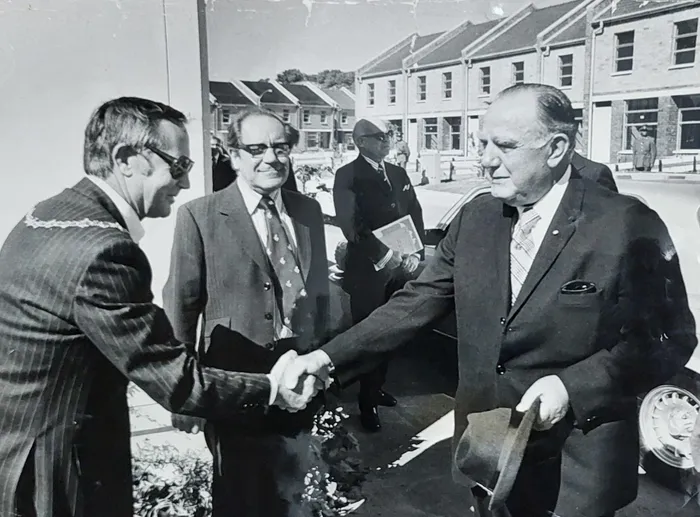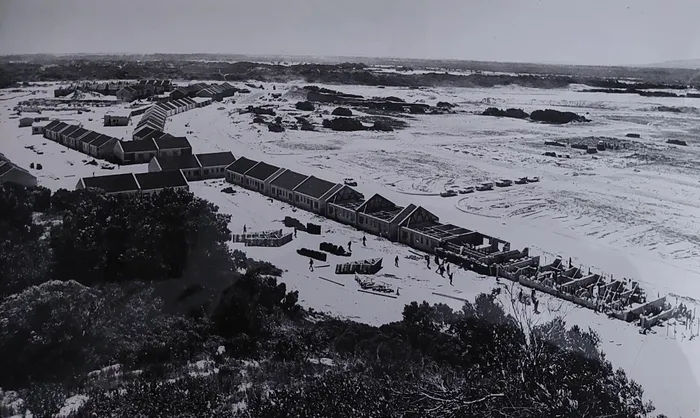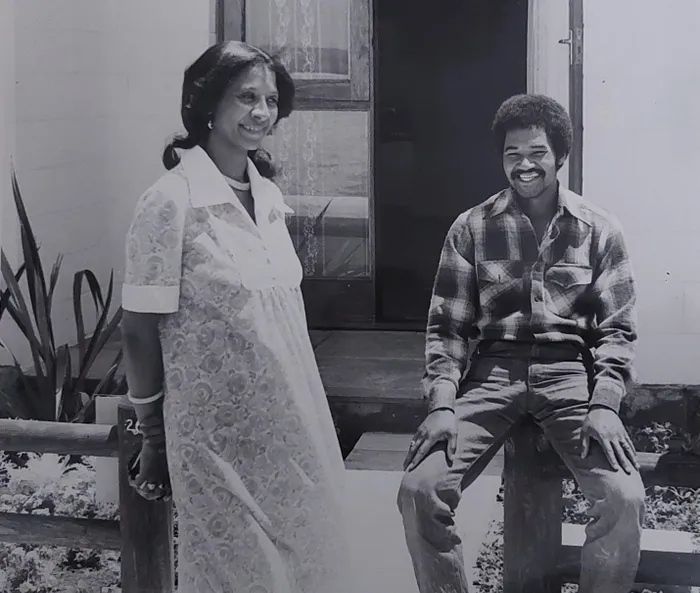On the cusp of its 50th anniversary – monumental moment for Mitchell’s Plain

A month before the official opening of Mitchell's Plain in April 1976, then prime minister Balthazar Johannes “BJ” Vorster, right, visited the ambitious housing project. He is greeted by then mayor John Tyers,with mayoral liaison officer Eddie Stassen in the middle, and City engineer Jan Brand at the back.
Image: FILE PICTURE: ARCHIVES
This time next year, Mitchell’s Plain will be marking its 50th anniversary and as preparations are under way to commemorate this critical moment in its history, we look back at how the area took shape from the sandy plains and dune land it is rooted in.
Begun in 1974 to house a quarter of a million people by 1984, Mitchell’s Plain was one of the most ambitious new town developments in the world and actually won an award for “The Most Outstanding Civil Engineering achievement” from the SA Institution of Civil Engineers in 1979 (“In the beginning: April 1976”, Plainsman 21st anniversary souvenir edition, October 25 2000).
The need for “a Mitchell’s Plain”, different from low-cost letting schemes, was envisaged way back in the mid-1960s and in October 1971, Mitchell’s Plain was proclaimed for “coloured” housing.
Research showed that the only land available for a development of this size was a farming area of 3 100 hectare south of Philippi.

History in the making... Construction of the first houses in Mitchell's Plain started off in the suburb of Westridge in 1975.
Image: FILE PICTURE: ARCHIVES
The land was recommended for purchase, but only expropriated in 1974 and the final purchase price only determined after a lengthy and costly arbitration.
A City Council memorandum, dated June 23 1972, to the then Minister of Transport, Ben Schoeman, recommended that the name “Goeie Hoop” be adopted for the area known as Mitchell’s Plain. However, it is not clear from council documents at the time why the name was never adopted or why another suggestion that Westridge should be known as “Southdowns” was turned down. The name “Southdowns” stems from the fact that the land was once the southern portion of the Downs Field Cornetcy.
Before the official opening of Mitchell’s Plain in April 1976, the then prime minister Balthazar Johannes “BJ” Vorster, visited the new development in March 1976 and soon after, the first residents moved into Westridge.
The monthly income for about 57 percent of the families in Mitchell’s Plain was between R60 and R100 and less than 3 percent of people earned between R180 and R225.
By 1978, the sales company, Mitchells Plain (sic) Housing Sales, was formed and by then 300 families were moving in per month and Portland and Strandfontein were growing fast.
The selling prices of the houses were between R8 570 and R14 855 and the average monthly payment on houses was R72.

Merle and Alfonso January, pictured in December 1979, became the purchasers of the 10 000th house to be sold in Mitchell's Plain.
Image: FILE PICTURE: ARCHIVES
In a paper delivered by City engineer Jan Brand at the fourth conference of the SA Building Research Congress in May 1979 in the city, Mr Brand said: “Mitchell’s Plain offers homeownership with living conditions which afford opportunities, goals and incentives for the less privileged of the community to better themselves and pull themselves up by their own bootstraps”.
Mr Brand also said in that address that “the biggest problem facing the coloured community in the Cape were population growth, poverty and lawlessness”.
• In the next instalment of this special feature we will look at how Mitchell’s Plain has developed and how the people of this often enigmatic yet irrepressible community have made their mark in the ‘Plain and beyond.